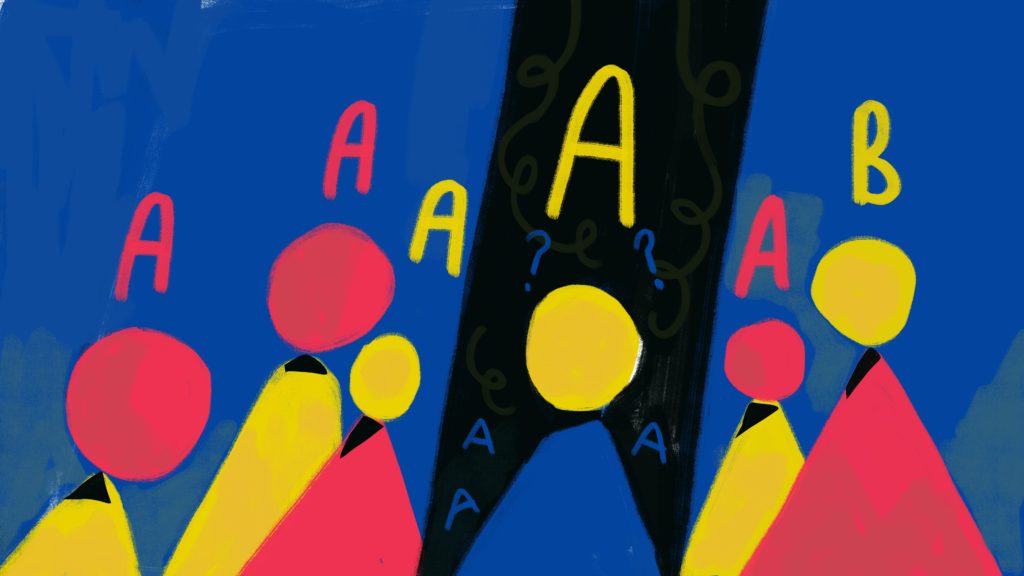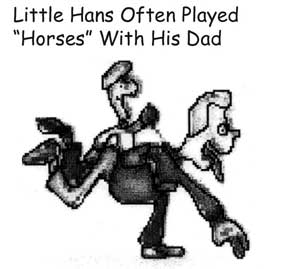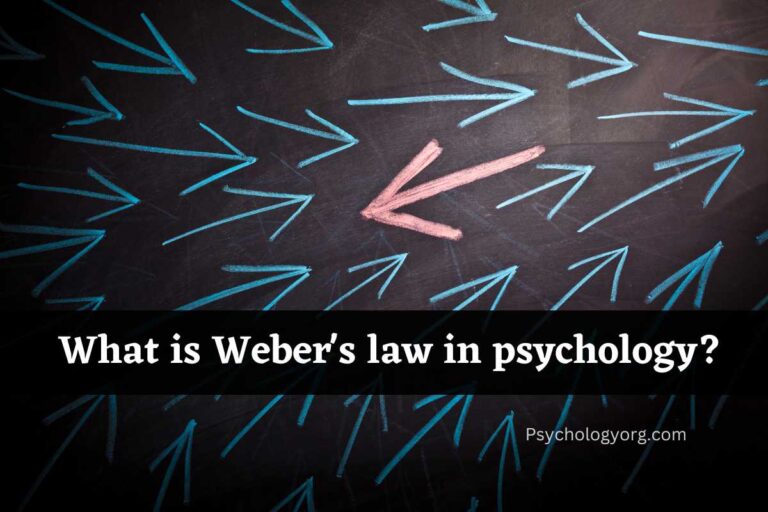

Freelance tekstschrijver voor de geestelijke gezondheidszorg
5 psychologische experimenten die je moet kennen.

Waarom gedragen mensen zich zoals ze doen? Om hierachter te komen, deden wetenschappers de afgelopen decennia heel wat psychologische experimenten.
Tegenwoordig moeten die – terecht – voldoen aan allerlei ethische eisen. Zoals vrijwillige deelname van proefpersonen en het voorkomen van psychische schade. Maar halverwege de vorige eeuw, toen ze populair werden, namen wetenschappers het nog niet zo nauw.
Dat leverde ons wel belangrijke en beroemde inzichten op, waaronder deze vijf must knows.
Psychologisch experiment 1: het omstandereffect ( the bystander effect )
Beland je in een noodsituatie of word je slachtoffer van een misdrijf of pesterijen? Sta dan niet gek te kijken als omstanders niet ingrijpen of pas heel laat in actie komen. Bovendien, hoe groter de groep omstanders, hoe kleiner de kans dat iemand ingrijpt. Dat komt door normale psychologische processen, zoals:
- sociale invloed (als niemand ingrijpt, zal het wel niet ernstig zijn);
- stress (ik kan nu echt niet te laat komen op m’n werk, laat iemand met meer tijd maar helpen);
- en angst (straks raak ik zelf nog gewond).
Roep daarom in zo’n situatie niet zomaar ‘help!’ , maar wijs iemand persoonlijk aan. Bijvoorbeeld: "Mevrouw met de paarse jas, ik heb uw hulp nodig, wilt u alstublieft een ambulance bellen?"
Psychologisch experiment 2: selectieve aandacht
Als je aandacht op één ding gericht is, merk je andere dingen minder goed op, of helemaal niet. Dit is hoe onze hersenen zijn geprogrammeerd , omdat we dagelijks zoveel informatie krijgen dat onze hersenen niet alles tegelijk kunnen verwerken. Onderstaande video is een beroemde illustratie van dit fenomeen. Onze selectieve aandacht verklaart ook waarom getuigenverhoren vaak moeilijk zijn. En waarom mensen de neiging hebben om te snel conclusies te trekken.
Psychologisch experiment 3: groepsdruk
Of je het nu wilt of niet, de meerderheid van een groep waarvan je deel uitmaakt, beïnvloedt vaak je mening . In het onderstaande experiment van Salomon Asch zie je een 'quiz' met vijf nep-deelnemers (die in het complot zitten) en één echte. De opdracht is simpel: welke lijn komt overeen met de andere? Maar de nep-deelnemers geven consequent het verkeerde antwoord. Hoe vaak denk je dat de proefpersoon zijn eigen beoordeling laat varen?
Psychologisch experiment 4: vijandigheid tussen groepen
Heb je je ooit afgevraagd waarom bepaalde groepen zo vijandig tegenover elkaar staan? De realistische conflicttheorie biedt daar een verklaring voor: competitie over (vermeende) schaarse bronnen, zoals geld, macht en status. Ook het hebben van een alles-of-niets-gevoel speelt daarbij een rol. Het Robbers Cave-experiment van Muzafer Sherif is een van de bekendste demonstraties van dit effect. Vijandigheid tussen groepen kan alleen worden opgelost door een gezamenlijk doel te stellen (samenleven is niet genoeg).
Psychologisch experiment 5: aangeleerde hulpeloosheid
In de jaren '60 kreeg Martin Seligman interessante inzichten door experimenten met honden. Mensen (en dieren) gedragen zich in bepaalde situaties hulpeloos, terwijl ze de capaciteiten hebben om iets aan de onplezierige omstandigheden te veranderen. Dat komt vaak omdat ze eerder negatieve ervaringen hebben gehad bij hun pogingen om aan de nare situatie te ontsnappen. Aangeleerde hulpeloosheid speelt bijvoorbeeld een rol bij depressie .
Ken je nog andere beroemde psychologische experimenten om aan deze lijst toe te voegen?
Helaas is reageren op dit artikel niet meer mogelijk omdat het originele blog (Passievoorpsychologie.nl) niet meer bestaat. Toch hoop ik dat je waardevolle inzichten hebt opgedaan die je verder kunnen helpen.
[Bronnen: Psychologie, Marc Brysbaert ; Wikipedia.org]
Deel dit blog:
« Terug naar het overzicht
Reactie of vraag bij dit blog? Laat het me weten!
- Prijs gewonnen
- Kennis delen
- The 25 Most Influential Psychological Experiments in History

While each year thousands and thousands of studies are completed in the many specialty areas of psychology, there are a handful that, over the years, have had a lasting impact in the psychological community as a whole. Some of these were dutifully conducted, keeping within the confines of ethical and practical guidelines. Others pushed the boundaries of human behavior during their psychological experiments and created controversies that still linger to this day. And still others were not designed to be true psychological experiments, but ended up as beacons to the psychological community in proving or disproving theories.
This is a list of the 25 most influential psychological experiments still being taught to psychology students of today.
1. A Class Divided
Study conducted by: jane elliott.
Study Conducted in 1968 in an Iowa classroom

Experiment Details: Jane Elliott’s famous experiment was inspired by the assassination of Dr. Martin Luther King Jr. and the inspirational life that he led. The third grade teacher developed an exercise, or better yet, a psychological experiment, to help her Caucasian students understand the effects of racism and prejudice.
Elliott divided her class into two separate groups: blue-eyed students and brown-eyed students. On the first day, she labeled the blue-eyed group as the superior group and from that point forward they had extra privileges, leaving the brown-eyed children to represent the minority group. She discouraged the groups from interacting and singled out individual students to stress the negative characteristics of the children in the minority group. What this exercise showed was that the children’s behavior changed almost instantaneously. The group of blue-eyed students performed better academically and even began bullying their brown-eyed classmates. The brown-eyed group experienced lower self-confidence and worse academic performance. The next day, she reversed the roles of the two groups and the blue-eyed students became the minority group.
At the end of the experiment, the children were so relieved that they were reported to have embraced one another and agreed that people should not be judged based on outward appearances. This exercise has since been repeated many times with similar outcomes.
For more information click here
2. Asch Conformity Study
Study conducted by: dr. solomon asch.
Study Conducted in 1951 at Swarthmore College

Experiment Details: Dr. Solomon Asch conducted a groundbreaking study that was designed to evaluate a person’s likelihood to conform to a standard when there is pressure to do so.
A group of participants were shown pictures with lines of various lengths and were then asked a simple question: Which line is longest? The tricky part of this study was that in each group only one person was a true participant. The others were actors with a script. Most of the actors were instructed to give the wrong answer. Strangely, the one true participant almost always agreed with the majority, even though they knew they were giving the wrong answer.
The results of this study are important when we study social interactions among individuals in groups. This study is a famous example of the temptation many of us experience to conform to a standard during group situations and it showed that people often care more about being the same as others than they do about being right. It is still recognized as one of the most influential psychological experiments for understanding human behavior.
3. Bobo Doll Experiment
Study conducted by: dr. alburt bandura.
Study Conducted between 1961-1963 at Stanford University

In his groundbreaking study he separated participants into three groups:
- one was exposed to a video of an adult showing aggressive behavior towards a Bobo doll
- another was exposed to video of a passive adult playing with the Bobo doll
- the third formed a control group
Children watched their assigned video and then were sent to a room with the same doll they had seen in the video (with the exception of those in the control group). What the researcher found was that children exposed to the aggressive model were more likely to exhibit aggressive behavior towards the doll themselves. The other groups showed little imitative aggressive behavior. For those children exposed to the aggressive model, the number of derivative physical aggressions shown by the boys was 38.2 and 12.7 for the girls.
The study also showed that boys exhibited more aggression when exposed to aggressive male models than boys exposed to aggressive female models. When exposed to aggressive male models, the number of aggressive instances exhibited by boys averaged 104. This is compared to 48.4 aggressive instances exhibited by boys who were exposed to aggressive female models.
While the results for the girls show similar findings, the results were less drastic. When exposed to aggressive female models, the number of aggressive instances exhibited by girls averaged 57.7. This is compared to 36.3 aggressive instances exhibited by girls who were exposed to aggressive male models. The results concerning gender differences strongly supported Bandura’s secondary prediction that children will be more strongly influenced by same-sex models. The Bobo Doll Experiment showed a groundbreaking way to study human behavior and it’s influences.
4. Car Crash Experiment
Study conducted by: elizabeth loftus and john palmer.
Study Conducted in 1974 at The University of California in Irvine

The participants watched slides of a car accident and were asked to describe what had happened as if they were eyewitnesses to the scene. The participants were put into two groups and each group was questioned using different wording such as “how fast was the car driving at the time of impact?” versus “how fast was the car going when it smashed into the other car?” The experimenters found that the use of different verbs affected the participants’ memories of the accident, showing that memory can be easily distorted.
This research suggests that memory can be easily manipulated by questioning technique. This means that information gathered after the event can merge with original memory causing incorrect recall or reconstructive memory. The addition of false details to a memory of an event is now referred to as confabulation. This concept has very important implications for the questions used in police interviews of eyewitnesses.
5. Cognitive Dissonance Experiment
Study conducted by: leon festinger and james carlsmith.
Study Conducted in 1957 at Stanford University
Experiment Details: The concept of cognitive dissonance refers to a situation involving conflicting:
This conflict produces an inherent feeling of discomfort leading to a change in one of the attitudes, beliefs or behaviors to minimize or eliminate the discomfort and restore balance.
Cognitive dissonance was first investigated by Leon Festinger, after an observational study of a cult that believed that the earth was going to be destroyed by a flood. Out of this study was born an intriguing experiment conducted by Festinger and Carlsmith where participants were asked to perform a series of dull tasks (such as turning pegs in a peg board for an hour). Participant’s initial attitudes toward this task were highly negative.
They were then paid either $1 or $20 to tell a participant waiting in the lobby that the tasks were really interesting. Almost all of the participants agreed to walk into the waiting room and persuade the next participant that the boring experiment would be fun. When the participants were later asked to evaluate the experiment, the participants who were paid only $1 rated the tedious task as more fun and enjoyable than the participants who were paid $20 to lie.
Being paid only $1 is not sufficient incentive for lying and so those who were paid $1 experienced dissonance. They could only overcome that cognitive dissonance by coming to believe that the tasks really were interesting and enjoyable. Being paid $20 provides a reason for turning pegs and there is therefore no dissonance.
6. Fantz’s Looking Chamber
Study conducted by: robert l. fantz.
Study Conducted in 1961 at the University of Illinois
Experiment Details: The study conducted by Robert L. Fantz is among the simplest, yet most important in the field of infant development and vision. In 1961, when this experiment was conducted, there very few ways to study what was going on in the mind of an infant. Fantz realized that the best way was to simply watch the actions and reactions of infants. He understood the fundamental factor that if there is something of interest near humans, they generally look at it.
To test this concept, Fantz set up a display board with two pictures attached. On one was a bulls-eye. On the other was the sketch of a human face. This board was hung in a chamber where a baby could lie safely underneath and see both images. Then, from behind the board, invisible to the baby, he peeked through a hole to watch what the baby looked at. This study showed that a two-month old baby looked twice as much at the human face as it did at the bulls-eye. This suggests that human babies have some powers of pattern and form selection. Before this experiment it was thought that babies looked out onto a chaotic world of which they could make little sense.
7. Hawthorne Effect
Study conducted by: henry a. landsberger.
Study Conducted in 1955 at Hawthorne Works in Chicago, Illinois

Landsberger performed the study by analyzing data from experiments conducted between 1924 and 1932, by Elton Mayo, at the Hawthorne Works near Chicago. The company had commissioned studies to evaluate whether the level of light in a building changed the productivity of the workers. What Mayo found was that the level of light made no difference in productivity. The workers increased their output whenever the amount of light was switched from a low level to a high level, or vice versa.
The researchers noticed a tendency that the workers’ level of efficiency increased when any variable was manipulated. The study showed that the output changed simply because the workers were aware that they were under observation. The conclusion was that the workers felt important because they were pleased to be singled out. They increased productivity as a result. Being singled out was the factor dictating increased productivity, not the changing lighting levels, or any of the other factors that they experimented upon.
The Hawthorne Effect has become one of the hardest inbuilt biases to eliminate or factor into the design of any experiment in psychology and beyond.
8. Kitty Genovese Case
Study conducted by: new york police force.
Study Conducted in 1964 in New York City
Experiment Details: The murder case of Kitty Genovese was never intended to be a psychological experiment, however it ended up having serious implications for the field.
According to a New York Times article, almost 40 neighbors witnessed Kitty Genovese being savagely attacked and murdered in Queens, New York in 1964. Not one neighbor called the police for help. Some reports state that the attacker briefly left the scene and later returned to “finish off” his victim. It was later uncovered that many of these facts were exaggerated. (There were more likely only a dozen witnesses and records show that some calls to police were made).
What this case later become famous for is the “Bystander Effect,” which states that the more bystanders that are present in a social situation, the less likely it is that anyone will step in and help. This effect has led to changes in medicine, psychology and many other areas. One famous example is the way CPR is taught to new learners. All students in CPR courses learn that they must assign one bystander the job of alerting authorities which minimizes the chances of no one calling for assistance.
9. Learned Helplessness Experiment
Study conducted by: martin seligman.
Study Conducted in 1967 at the University of Pennsylvania

Seligman’s experiment involved the ringing of a bell and then the administration of a light shock to a dog. After a number of pairings, the dog reacted to the shock even before it happened. As soon as the dog heard the bell, he reacted as though he’d already been shocked.
During the course of this study something unexpected happened. Each dog was placed in a large crate that was divided down the middle with a low fence. The dog could see and jump over the fence easily. The floor on one side of the fence was electrified, but not on the other side of the fence. Seligman placed each dog on the electrified side and administered a light shock. He expected the dog to jump to the non-shocking side of the fence. In an unexpected turn, the dogs simply laid down.
The hypothesis was that as the dogs learned from the first part of the experiment that there was nothing they could do to avoid the shocks, they gave up in the second part of the experiment. To prove this hypothesis the experimenters brought in a new set of animals and found that dogs with no history in the experiment would jump over the fence.
This condition was described as learned helplessness. A human or animal does not attempt to get out of a negative situation because the past has taught them that they are helpless.
10. Little Albert Experiment
Study conducted by: john b. watson and rosalie rayner.
Study Conducted in 1920 at Johns Hopkins University

The experiment began by placing a white rat in front of the infant, who initially had no fear of the animal. Watson then produced a loud sound by striking a steel bar with a hammer every time little Albert was presented with the rat. After several pairings (the noise and the presentation of the white rat), the boy began to cry and exhibit signs of fear every time the rat appeared in the room. Watson also created similar conditioned reflexes with other common animals and objects (rabbits, Santa beard, etc.) until Albert feared them all.
This study proved that classical conditioning works on humans. One of its most important implications is that adult fears are often connected to early childhood experiences.
11. Magical Number Seven
Study conducted by: george a. miller.
Study Conducted in 1956 at Princeton University
Experiment Details: Frequently referred to as “ Miller’s Law,” the Magical Number Seven experiment purports that the number of objects an average human can hold in working memory is 7 ± 2. This means that the human memory capacity typically includes strings of words or concepts ranging from 5-9. This information on the limits to the capacity for processing information became one of the most highly cited papers in psychology.
The Magical Number Seven Experiment was published in 1956 by cognitive psychologist George A. Miller of Princeton University’s Department of Psychology in Psychological Review . In the article, Miller discussed a concurrence between the limits of one-dimensional absolute judgment and the limits of short-term memory.
In a one-dimensional absolute-judgment task, a person is presented with a number of stimuli that vary on one dimension (such as 10 different tones varying only in pitch). The person responds to each stimulus with a corresponding response (learned before).
Performance is almost perfect up to five or six different stimuli but declines as the number of different stimuli is increased. This means that a human’s maximum performance on one-dimensional absolute judgment can be described as an information store with the maximum capacity of approximately 2 to 3 bits of information There is the ability to distinguish between four and eight alternatives.
12. Pavlov’s Dog Experiment
Study conducted by: ivan pavlov.
Study Conducted in the 1890s at the Military Medical Academy in St. Petersburg, Russia

Pavlov began with the simple idea that there are some things that a dog does not need to learn. He observed that dogs do not learn to salivate when they see food. This reflex is “hard wired” into the dog. This is an unconditioned response (a stimulus-response connection that required no learning).
Pavlov outlined that there are unconditioned responses in the animal by presenting a dog with a bowl of food and then measuring its salivary secretions. In the experiment, Pavlov used a bell as his neutral stimulus. Whenever he gave food to his dogs, he also rang a bell. After a number of repeats of this procedure, he tried the bell on its own. What he found was that the bell on its own now caused an increase in salivation. The dog had learned to associate the bell and the food. This learning created a new behavior. The dog salivated when he heard the bell. Because this response was learned (or conditioned), it is called a conditioned response. The neutral stimulus has become a conditioned stimulus.
This theory came to be known as classical conditioning.
13. Robbers Cave Experiment
Study conducted by: muzafer and carolyn sherif.
Study Conducted in 1954 at the University of Oklahoma
Experiment Details: This experiment, which studied group conflict, is considered by most to be outside the lines of what is considered ethically sound.
In 1954 researchers at the University of Oklahoma assigned 22 eleven- and twelve-year-old boys from similar backgrounds into two groups. The two groups were taken to separate areas of a summer camp facility where they were able to bond as social units. The groups were housed in separate cabins and neither group knew of the other’s existence for an entire week. The boys bonded with their cabin mates during that time. Once the two groups were allowed to have contact, they showed definite signs of prejudice and hostility toward each other even though they had only been given a very short time to develop their social group. To increase the conflict between the groups, the experimenters had them compete against each other in a series of activities. This created even more hostility and eventually the groups refused to eat in the same room. The final phase of the experiment involved turning the rival groups into friends. The fun activities the experimenters had planned like shooting firecrackers and watching movies did not initially work, so they created teamwork exercises where the two groups were forced to collaborate. At the end of the experiment, the boys decided to ride the same bus home, demonstrating that conflict can be resolved and prejudice overcome through cooperation.
Many critics have compared this study to Golding’s Lord of the Flies novel as a classic example of prejudice and conflict resolution.
14. Ross’ False Consensus Effect Study
Study conducted by: lee ross.
Study Conducted in 1977 at Stanford University
Experiment Details: In 1977, a social psychology professor at Stanford University named Lee Ross conducted an experiment that, in lay terms, focuses on how people can incorrectly conclude that others think the same way they do, or form a “false consensus” about the beliefs and preferences of others. Ross conducted the study in order to outline how the “false consensus effect” functions in humans.
Featured Programs
In the first part of the study, participants were asked to read about situations in which a conflict occurred and then were told two alternative ways of responding to the situation. They were asked to do three things:
- Guess which option other people would choose
- Say which option they themselves would choose
- Describe the attributes of the person who would likely choose each of the two options
What the study showed was that most of the subjects believed that other people would do the same as them, regardless of which of the two responses they actually chose themselves. This phenomenon is referred to as the false consensus effect, where an individual thinks that other people think the same way they do when they may not. The second observation coming from this important study is that when participants were asked to describe the attributes of the people who will likely make the choice opposite of their own, they made bold and sometimes negative predictions about the personalities of those who did not share their choice.
15. The Schachter and Singer Experiment on Emotion
Study conducted by: stanley schachter and jerome e. singer.
Study Conducted in 1962 at Columbia University
Experiment Details: In 1962 Schachter and Singer conducted a ground breaking experiment to prove their theory of emotion.
In the study, a group of 184 male participants were injected with epinephrine, a hormone that induces arousal including increased heartbeat, trembling, and rapid breathing. The research participants were told that they were being injected with a new medication to test their eyesight. The first group of participants was informed the possible side effects that the injection might cause while the second group of participants were not. The participants were then placed in a room with someone they thought was another participant, but was actually a confederate in the experiment. The confederate acted in one of two ways: euphoric or angry. Participants who had not been informed about the effects of the injection were more likely to feel either happier or angrier than those who had been informed.
What Schachter and Singer were trying to understand was the ways in which cognition or thoughts influence human emotion. Their study illustrates the importance of how people interpret their physiological states, which form an important component of your emotions. Though their cognitive theory of emotional arousal dominated the field for two decades, it has been criticized for two main reasons: the size of the effect seen in the experiment was not that significant and other researchers had difficulties repeating the experiment.
16. Selective Attention / Invisible Gorilla Experiment
Study conducted by: daniel simons and christopher chabris.
Study Conducted in 1999 at Harvard University
Experiment Details: In 1999 Simons and Chabris conducted their famous awareness test at Harvard University.
Participants in the study were asked to watch a video and count how many passes occurred between basketball players on the white team. The video moves at a moderate pace and keeping track of the passes is a relatively easy task. What most people fail to notice amidst their counting is that in the middle of the test, a man in a gorilla suit walked onto the court and stood in the center before walking off-screen.
The study found that the majority of the subjects did not notice the gorilla at all, proving that humans often overestimate their ability to effectively multi-task. What the study set out to prove is that when people are asked to attend to one task, they focus so strongly on that element that they may miss other important details.
17. Stanford Prison Study
Study conducted by philip zimbardo.
Study Conducted in 1971 at Stanford University

The Stanford Prison Experiment was designed to study behavior of “normal” individuals when assigned a role of prisoner or guard. College students were recruited to participate. They were assigned roles of “guard” or “inmate.” Zimbardo played the role of the warden. The basement of the psychology building was the set of the prison. Great care was taken to make it look and feel as realistic as possible.
The prison guards were told to run a prison for two weeks. They were told not to physically harm any of the inmates during the study. After a few days, the prison guards became very abusive verbally towards the inmates. Many of the prisoners became submissive to those in authority roles. The Stanford Prison Experiment inevitably had to be cancelled because some of the participants displayed troubling signs of breaking down mentally.
Although the experiment was conducted very unethically, many psychologists believe that the findings showed how much human behavior is situational. People will conform to certain roles if the conditions are right. The Stanford Prison Experiment remains one of the most famous psychology experiments of all time.
18. Stanley Milgram Experiment
Study conducted by stanley milgram.
Study Conducted in 1961 at Stanford University
Experiment Details: This 1961 study was conducted by Yale University psychologist Stanley Milgram. It was designed to measure people’s willingness to obey authority figures when instructed to perform acts that conflicted with their morals. The study was based on the premise that humans will inherently take direction from authority figures from very early in life.
Participants were told they were participating in a study on memory. They were asked to watch another person (an actor) do a memory test. They were instructed to press a button that gave an electric shock each time the person got a wrong answer. (The actor did not actually receive the shocks, but pretended they did).
Participants were told to play the role of “teacher” and administer electric shocks to “the learner,” every time they answered a question incorrectly. The experimenters asked the participants to keep increasing the shocks. Most of them obeyed even though the individual completing the memory test appeared to be in great pain. Despite these protests, many participants continued the experiment when the authority figure urged them to. They increased the voltage after each wrong answer until some eventually administered what would be lethal electric shocks.
This experiment showed that humans are conditioned to obey authority and will usually do so even if it goes against their natural morals or common sense.
19. Surrogate Mother Experiment
Study conducted by: harry harlow.
Study Conducted from 1957-1963 at the University of Wisconsin
Experiment Details: In a series of controversial experiments during the late 1950s and early 1960s, Harry Harlow studied the importance of a mother’s love for healthy childhood development.
In order to do this he separated infant rhesus monkeys from their mothers a few hours after birth and left them to be raised by two “surrogate mothers.” One of the surrogates was made of wire with an attached bottle for food. The other was made of soft terrycloth but lacked food. The researcher found that the baby monkeys spent much more time with the cloth mother than the wire mother, thereby proving that affection plays a greater role than sustenance when it comes to childhood development. They also found that the monkeys that spent more time cuddling the soft mother grew up to healthier.
This experiment showed that love, as demonstrated by physical body contact, is a more important aspect of the parent-child bond than the provision of basic needs. These findings also had implications in the attachment between fathers and their infants when the mother is the source of nourishment.
20. The Good Samaritan Experiment
Study conducted by: john darley and daniel batson.
Study Conducted in 1973 at The Princeton Theological Seminary (Researchers were from Princeton University)
Experiment Details: In 1973, an experiment was created by John Darley and Daniel Batson, to investigate the potential causes that underlie altruistic behavior. The researchers set out three hypotheses they wanted to test:
- People thinking about religion and higher principles would be no more inclined to show helping behavior than laymen.
- People in a rush would be much less likely to show helping behavior.
- People who are religious for personal gain would be less likely to help than people who are religious because they want to gain some spiritual and personal insights into the meaning of life.
Student participants were given some religious teaching and instruction. They were then were told to travel from one building to the next. Between the two buildings was a man lying injured and appearing to be in dire need of assistance. The first variable being tested was the degree of urgency impressed upon the subjects, with some being told not to rush and others being informed that speed was of the essence.
The results of the experiment were intriguing, with the haste of the subject proving to be the overriding factor. When the subject was in no hurry, nearly two-thirds of people stopped to lend assistance. When the subject was in a rush, this dropped to one in ten.
People who were on the way to deliver a speech about helping others were nearly twice as likely to help as those delivering other sermons,. This showed that the thoughts of the individual were a factor in determining helping behavior. Religious beliefs did not appear to make much difference on the results. Being religious for personal gain, or as part of a spiritual quest, did not appear to make much of an impact on the amount of helping behavior shown.
21. The Halo Effect Experiment
Study conducted by: richard e. nisbett and timothy decamp wilson.
Study Conducted in 1977 at the University of Michigan
Experiment Details: The Halo Effect states that people generally assume that people who are physically attractive are more likely to:
- be intelligent
- be friendly
- display good judgment
To prove their theory, Nisbett and DeCamp Wilson created a study to prove that people have little awareness of the nature of the Halo Effect. They’re not aware that it influences:
- their personal judgments
- the production of a more complex social behavior
In the experiment, college students were the research participants. They were asked to evaluate a psychology instructor as they view him in a videotaped interview. The students were randomly assigned to one of two groups. Each group was shown one of two different interviews with the same instructor. The instructor is a native French-speaking Belgian who spoke English with a noticeable accent. In the first video, the instructor presented himself as someone:
- respectful of his students’ intelligence and motives
- flexible in his approach to teaching
- enthusiastic about his subject matter
In the second interview, he presented himself as much more unlikable. He was cold and distrustful toward the students and was quite rigid in his teaching style.
After watching the videos, the subjects were asked to rate the lecturer on:
- physical appearance
His mannerisms and accent were kept the same in both versions of videos. The subjects were asked to rate the professor on an 8-point scale ranging from “like extremely” to “dislike extremely.” Subjects were also told that the researchers were interested in knowing “how much their liking for the teacher influenced the ratings they just made.” Other subjects were asked to identify how much the characteristics they just rated influenced their liking of the teacher.
After responding to the questionnaire, the respondents were puzzled about their reactions to the videotapes and to the questionnaire items. The students had no idea why they gave one lecturer higher ratings. Most said that how much they liked the lecturer had not affected their evaluation of his individual characteristics at all.
The interesting thing about this study is that people can understand the phenomenon, but they are unaware when it is occurring. Without realizing it, humans make judgments. Even when it is pointed out, they may still deny that it is a product of the halo effect phenomenon.
22. The Marshmallow Test
Study conducted by: walter mischel.
Study Conducted in 1972 at Stanford University

In his 1972 Marshmallow Experiment, children ages four to six were taken into a room where a marshmallow was placed in front of them on a table. Before leaving each of the children alone in the room, the experimenter informed them that they would receive a second marshmallow if the first one was still on the table after they returned in 15 minutes. The examiner recorded how long each child resisted eating the marshmallow and noted whether it correlated with the child’s success in adulthood. A small number of the 600 children ate the marshmallow immediately and one-third delayed gratification long enough to receive the second marshmallow.
In follow-up studies, Mischel found that those who deferred gratification were significantly more competent and received higher SAT scores than their peers. This characteristic likely remains with a person for life. While this study seems simplistic, the findings outline some of the foundational differences in individual traits that can predict success.
23. The Monster Study
Study conducted by: wendell johnson.
Study Conducted in 1939 at the University of Iowa
Experiment Details: The Monster Study received this negative title due to the unethical methods that were used to determine the effects of positive and negative speech therapy on children.
Wendell Johnson of the University of Iowa selected 22 orphaned children, some with stutters and some without. The children were in two groups. The group of children with stutters was placed in positive speech therapy, where they were praised for their fluency. The non-stutterers were placed in negative speech therapy, where they were disparaged for every mistake in grammar that they made.
As a result of the experiment, some of the children who received negative speech therapy suffered psychological effects and retained speech problems for the rest of their lives. They were examples of the significance of positive reinforcement in education.
The initial goal of the study was to investigate positive and negative speech therapy. However, the implication spanned much further into methods of teaching for young children.
24. Violinist at the Metro Experiment
Study conducted by: staff at the washington post.
Study Conducted in 2007 at a Washington D.C. Metro Train Station

During the study, pedestrians rushed by without realizing that the musician playing at the entrance to the metro stop was Grammy-winning musician, Joshua Bell. Two days before playing in the subway, he sold out at a theater in Boston where the seats average $100. He played one of the most intricate pieces ever written with a violin worth 3.5 million dollars. In the 45 minutes the musician played his violin, only 6 people stopped and stayed for a while. Around 20 gave him money, but continued to walk their normal pace. He collected $32.
The study and the subsequent article organized by the Washington Post was part of a social experiment looking at:
- the priorities of people
Gene Weingarten wrote about the social experiment: “In a banal setting at an inconvenient time, would beauty transcend?” Later he won a Pulitzer Prize for his story. Some of the questions the article addresses are:
- Do we perceive beauty?
- Do we stop to appreciate it?
- Do we recognize the talent in an unexpected context?
As it turns out, many of us are not nearly as perceptive to our environment as we might like to think.
25. Visual Cliff Experiment
Study conducted by: eleanor gibson and richard walk.
Study Conducted in 1959 at Cornell University
Experiment Details: In 1959, psychologists Eleanor Gibson and Richard Walk set out to study depth perception in infants. They wanted to know if depth perception is a learned behavior or if it is something that we are born with. To study this, Gibson and Walk conducted the visual cliff experiment.
They studied 36 infants between the ages of six and 14 months, all of whom could crawl. The infants were placed one at a time on a visual cliff. A visual cliff was created using a large glass table that was raised about a foot off the floor. Half of the glass table had a checker pattern underneath in order to create the appearance of a ‘shallow side.’
In order to create a ‘deep side,’ a checker pattern was created on the floor; this side is the visual cliff. The placement of the checker pattern on the floor creates the illusion of a sudden drop-off. Researchers placed a foot-wide centerboard between the shallow side and the deep side. Gibson and Walk found the following:
- Nine of the infants did not move off the centerboard.
- All of the 27 infants who did move crossed into the shallow side when their mothers called them from the shallow side.
- Three of the infants crawled off the visual cliff toward their mother when called from the deep side.
- When called from the deep side, the remaining 24 children either crawled to the shallow side or cried because they could not cross the visual cliff and make it to their mother.
What this study helped demonstrate is that depth perception is likely an inborn train in humans.
Among these experiments and psychological tests, we see boundaries pushed and theories taking on a life of their own. It is through the endless stream of psychological experimentation that we can see simple hypotheses become guiding theories for those in this field. The greater field of psychology became a formal field of experimental study in 1879, when Wilhelm Wundt established the first laboratory dedicated solely to psychological research in Leipzig, Germany. Wundt was the first person to refer to himself as a psychologist. Since 1879, psychology has grown into a massive collection of:
- methods of practice
It’s also a specialty area in the field of healthcare. None of this would have been possible without these and many other important psychological experiments that have stood the test of time.
- 20 Most Unethical Experiments in Psychology
- What Careers are in Experimental Psychology?
- 10 Things to Know About the Psychology of Psychotherapy
About Education: Psychology
Explorable.com
Mental Floss.com
About the Author
After earning a Bachelor of Arts in Psychology from Rutgers University and then a Master of Science in Clinical and Forensic Psychology from Drexel University, Kristen began a career as a therapist at two prisons in Philadelphia. At the same time she volunteered as a rape crisis counselor, also in Philadelphia. After a few years in the field she accepted a teaching position at a local college where she currently teaches online psychology courses. Kristen began writing in college and still enjoys her work as a writer, editor, professor and mother.
- 5 Best Online Ph.D. Marriage and Family Counseling Programs
- Top 5 Online Doctorate in Educational Psychology
- 5 Best Online Ph.D. in Industrial and Organizational Psychology Programs
- Top 10 Online Master’s in Forensic Psychology
- 10 Most Affordable Counseling Psychology Online Programs
- 10 Most Affordable Online Industrial Organizational Psychology Programs
- 10 Most Affordable Online Developmental Psychology Online Programs
- 15 Most Affordable Online Sport Psychology Programs
- 10 Most Affordable School Psychology Online Degree Programs
- Top 50 Online Psychology Master’s Degree Programs
- Top 25 Online Master’s in Educational Psychology
- Top 25 Online Master’s in Industrial/Organizational Psychology
- Top 10 Most Affordable Online Master’s in Clinical Psychology Degree Programs
- Top 6 Most Affordable Online PhD/PsyD Programs in Clinical Psychology
- 50 Great Small Colleges for a Bachelor’s in Psychology
- 50 Most Innovative University Psychology Departments
- The 30 Most Influential Cognitive Psychologists Alive Today
- Top 30 Affordable Online Psychology Degree Programs
- 30 Most Influential Neuroscientists
- Top 40 Websites for Psychology Students and Professionals
- Top 30 Psychology Blogs
- 25 Celebrities With Animal Phobias
- Your Phobias Illustrated (Infographic)
- 15 Inspiring TED Talks on Overcoming Challenges
- 10 Fascinating Facts About the Psychology of Color
- 15 Scariest Mental Disorders of All Time
- 15 Things to Know About Mental Disorders in Animals
- 13 Most Deranged Serial Killers of All Time

Site Information
- About Online Psychology Degree Guide

Het Asch experiment: conformiteit en groepsdruk
Het Asch-experiment, onder leiding van Solomon Asch, was een beroemd groepsdruk experiment dat was ontworpen om te testen hoe we reageren op groepsdruk en conformiteit. Wordt de mening en de individualiteit van een proefpersoon beïnvloed door de mening van de groep? Bezwijken we massaal onder groepsdruk?
Wie is Solomon Asch?
Solomon Asch (1907-1996) was een baanbrekende sociaal psycholoog die misschien het best wordt herinnerd voor zijn onderzoek naar de psychologie van conformiteit.
Asch werd geboren in Warschau, maar emigreerde in 1920 op 13-jarige leeftijd naar de Verenigde Staten. Hij leerde de Engels taal door de werken van Charles Dickens te lezen. Uiteindelijk kreeg Asch in New York zijn bachelordiploma in 1928. Hij ging vervolgens naar Columbia University, waar hij zijn masterdiploma haalde in 1930 en zijn PhD in 1932. Slim mannetje dus. 😉
Asch voerde een van de beroemdste laboratoriumexperimenten uit om conformiteit te onderzoeken in 1951. Hij onderzocht namelijk in welke mate groepsdruk, de sociale druk die je ervaart in het bijzijn van een heleboel mensen, een persoon kan beïnvloeden om zich te conformeren aan de mening van de groep.
Het experiment van Asch
Asch wilde zien of de echte deelnemer zich zou conformeren aan de meerderheid, zelfs wanneer het antwoord dat zij gaven duidelijk onjuist was.
De steekproef uit het onderzoek van Asch bestond uit 50 mannelijke studenten van het Swarthmore College in het prachtigeAmerika.
Asch gebruikte voor zijn groepsdruk experiment een beoordelingstaak , waarbij hij een voor een de proefpersonen in een kamer plaatste met zeven acteurs die in het complot zaten . Die acteurs hadden vooraf hun antwoorden met elkaar besproken. De proefpersoon dacht dat deze zeven acteurs ook gewoon deelnemers waren.
Het experiment was eenvoudig; elke proefpersoon werd op zijn beurt gevraagd een reeks vragen te beantwoorden. Elke persoon moest hardop zeggen welke lijn (A, B of C) even lang was als de getoonde lijn (X). Het was echt duidelijk te zien welke lijn het langst was. Simpel taakje zou je denken…
De deelnemers gaven verschillende antwoorden, eerst allemaal correct , om ervoor te zorgen dat de proefpersoon geen argwaan zou krijgen. Vervolgens gaven ze enkel de vooraf besproken onjuiste antwoorden.

Het resultaat?
Gemiddeld conformeerde de proefpersonen 32% van de vragen en ging mee met de mening van de groep. 74% van de proefpersonen conformeerde op ten minste één vraag en 26% van de deelnemers conformeerde nooit.
De meeste proefpersonen zeiden dat ze wel wisten dat hun antwoord fout was, maar ze gingen mee met de groep om erbij te horen of omdat ze dachten dat ze belachelijk zouden worden gemaakt.
Dit bevestigt dat proefpersonen conformeerden vanwege sociale beïnvloeding en de wens om erbij te horen.
Meer acteurs toevoegen maakte weinig verschil. Het Asch effect verzwakte bij groepen van meer dan zes of zeven personen.
Dus we bezwijken massaal onder groepsdruk?
Nou nee, niet helemaal.
Niet met dit experiment in ieder geval. 🙂
De resultaten van dit experiment kunnen niet worden gegeneraliseerd naar andere populaties. Asch gebruikte namelijk alleen een bevooroordeelde steekproef van 50 mannelijke studenten uit Amerika. Geen enkele vrouw nam deel.
Verder zou je kunnen oordelen dat het experiment van Asch een lage ecologische waarde heeft . De conformiteitstest van Asch is maar een lijnbeoordelingstaak. Het is een kunstmatige taak die niet echt relevant is voor het dagelijks leven.
Wat concluderen we uit dit experiment? Het gedrag en de verwachtingen van anderen bepalen hoe je dagelijks denkt en handelt, omdat wat je in een groep leert wat normaal is en van je wordt verwacht.
Tijd voor herhaalexperimenten
De Asch-experimenten zijn in de loop der jaren vele malen herhaald met studenten en niet-studenten, oud en jong, en in groepen van verschillende grootte en verschillende instellingen. De resultaten zijn consistent met het onderzoek van Asch: een derde tot de helft van de deelnemers gaf een onjuist antwoord in overeenstemming met de groep, wat de kracht van sociale invloeden aantoont.
Bij andere experimenten die hetzelfde testen, waarbij de proefpersonen de antwoorden anoniem konden opschrijven, waren er veel minder onjuiste antwoorden.
Het geeft dus wel meer inzicht in hoe volkomen normale mensen tot ongewoon gedrag kunnen worden gedwongen door iets simpels als groepsdruk.
En, bezwijk jij ook onder groepsdruk?
Bronnen Asch, S. E. (1951). Effects of group pressure upon the modification and distortion of judgment. In H. Guetzkow (ed.) Groups, leadership and men. Pittsburgh, PA: Carnegie Press.
Plaats een Reactie
Geef een reactie reactie annuleren.
Het e-mailadres wordt niet gepubliceerd. Vereiste velden zijn gemarkeerd met *
Contactgegevens
Bureau Bauwens Roelof Kleinhof 22 5026DH Tilburg
KVK-nummer: 76077624 BTW-nummer: NL003035149B96
Blogartikelen
- Hoe gebruik je Data-nosnippet?
- Wat is het verschil tussen correlatie en causatie?
- Cialdini beïnvloedingsprincipes om online te overtuigen
- Hoe hoog sta ik in Google?
- Ego Depletion: hoeveel wilskracht heb jij?
Direct naar…

Famous Experiments
The Most Influential Psychological Experiments in History
Perry et al. 2015 (Personal Space)

Solomon Asch Conformity Line Experiment Study
Reviewed by Olivia Guy-Evans, MSc
Bandura's Bobo Doll Experiment on Social Learning
John money gender experiment: reimer twins.
Reviewed by Saul McLeod, PhD
Jean Piaget
Behaviorism, neuroscience.
Jean Piaget's theory of cognitive development suggests that children move through four different stages of intellectual development which reflect the increasing sophistication of children's thoughts. Child development is determined by biological maturation and interaction with the environment.
Learn More: Piaget's Stages of Cognitive Development
Behaviorism is a theory of learning that states all behaviors are learned through interaction with the environment through a process called conditioning. Thus, behavior is simply a response to environmental stimuli.
Learn More: Behaviorist Approach in Psychology
Sigmund Freud (1856 to 1939) was the founding father of psychoanalysis, a method for treating mental illness and a theory that explains human behavior. His theories are clinically derived, based on what his patients told him during therapy.
Learn More: Sigmund Freud's Influence on Psychology
An approach is a perspective that involves certain assumptions about human behavior: the way people function, which aspects of them are worthy of study, and what research methods are appropriate for undertaking this study. The five major psychological perspectives are biological, psychodynamic, behaviorist, cognitive, and humanistic.
Learn More: Major Perspectives in Modern Psychology
Neuroscience is the branch of science concerned with studying the nervous system. It is a multidisciplinary field integrating numerous perspectives from biology, psychology, and medicine. It consists of several sub-fields ranging from the study of neurochemicals to the study of behavior and thought.
Learn More: What is Neuroscience?
Frequent Asked Questions
Is psychodynamic same as psychoanalytic?
The words psychodynamic and psychoanalytic are often confused. Remember that Freud’s theories were psychoanalytic, whereas the term ‘psychodynamic’ refers to both his theories and those of his followers, such as Carl Jung, Anna Freud, and Erik Erikson.
Learn More: Psychodynamic Approach
What is developmental psychology?
Developmental psychology is a scientific approach which aims to explain how thinking, feeling, and behavior change throughout a person’s life. A significant proportion of theories within this discipline focus upon development during childhood, as this is the period during an individual’s lifespan when the most change occurs.
Learn More: Developmental Psychology
What is Freud’s psychosexual theory?
Sigmund Freud proposed that personality development in childhood takes place during five psychosexual stages, which are the oral, anal, phallic, latency, and genital stages.
During each stage, sexual energy (libido) is expressed in different ways and through different body parts.
Learn More: Freud’s Psychosexual Stages of Development
What Is object permanence in Piaget’s theory?
Object permanence means knowing that an object still exists, even if it is hidden. It requires the ability to form a mental representation (i.e. a schema) of the object.
The attainment of object permanence generally signals the transition from the sensorimotor stage to the preoperational stage of development .
Learn More: What Is Object Permanence According To Piaget?
What is the difference between a psychology and sociology?
Psychology studies the mind of an individual to understand human behavior and social and emotional reactions, whereas sociology looks beyond individuals and examines societal institutions and groups of people.
Learn More: Similarities and Differences Between Sociology and Psychology
Explore Famous Experiments


Van Ijzendoorn & Kroonenberg: Cultural Variations in Attachment

Dement and Kleitman (1957)

Henry Gustav Molaison: The Curious Case of Patient H.M.

Held and Hein (1963) Kitten carosel

Hawthorne Effect: Definition, How It Works, and How to Avoid It

Harry Harlow Theory & Rhesus Monkey Experiments in Psychology

Hofling Hospital Experiment (1966)

Hodges and Tizard (1989): Attachment Research Study

What Happened to Kitty Genovese

Konrad Lorenz: Theory of Imprinting in Psychology

Little Hans - Freudian Case Study

Little Peter, Cover-Jones (1924)

Little Albert Experiment (Watson & Rayner)

Mary Ainsworth: Strange Situation Experiment & Attachment Theory

Stanford Marshmallow Test Experiment

Loftus and Palmer (1974): Car Crash Experiment

Stanley Milgram Shock Experiment

Pavlov’s Dogs Experiment and Pavlovian Conditioning Response

Phineas Gage: His Accident and Impact on Psychology

Piliavin (1969) Subway samaritan Study

Serial Position Effect (Glanzer & Cunitz, 1966)

Rosenhan (1973) Experiment - 'On being sane in insane places'

Robbers Cave Experiment | Realistic Conflict Theory

Visual Cliff Experiment (Gibson & Walk, 1960)

Skinner Box: What Is an Operant Conditioning Chamber?

Stanford Prison Experiment: Zimbardo's Famous Study

The 11 Most Influential Psychological Experiments in History
The history of psychology is marked by groundbreaking experiments that transformed our understanding of the human mind. These 11 Most Influential Psychological Experiments in History stand out as pivotal, offering profound insights into behaviour, cognition, and the complexities of human nature.
In this PsychologyOrg article, we’ll explain these key experiments, exploring their impact on our understanding of human behaviour and the intricate workings of the mind.
Table of Contents
Experimental psychology.
Experimental psychology is a branch of psychology that uses scientific methods to study human behaviour and mental processes. Researchers in this field design experiments to test hypotheses about topics such as perception, learning, memory, emotion, and motivation.
They use a variety of techniques to measure and analyze behaviour and mental processes, including behavioural observations, self-report measures, physiological recordings, and computer simulations. The findings of experimental psychology studies can have important implications for a wide range of fields, including education, healthcare, and public policy.
Experimental Psychology, Psychologists have long tried to gain insight into how we perceive the world, to understand what motivates our behavior. They have made great strides in lifting that veil of mystery. In addition to providing us with food for stimulating party conversations, some of the most famous psychological experiments of the last century reveal surprising and universal truths about nature.

Throughout the history of psychology, revolutionary experiments have reshaped our comprehension of the human mind. These 11 experiments are pivotal, providing deep insights into human behaviour, cognition, and the intricate facets of human nature.
1. Kohler and the Chimpanzee experiment
Wolfgang Kohler studied the insight process by observing the behaviour of chimpanzees in a problem situation. In the experimental situation, the animals were placed in a cage outside of which food, for example, a banana, was stored. There were other objects in the cage, such as sticks or boxes. The animals participating in the experiment were hungry, so they needed to get to the food. At first, the chimpanzee used sticks mainly for playful activities; but suddenly, in the mind of the hungry chimpanzee, a relationship between sticks and food developed.
The cane, from an object to play with, became an instrument through which it was possible to reach the banana placed outside the cage. There has been a restructuring of the perceptual field: Kohler stressed that the appearance of the new behaviour was not the result of random attempts according to a process of trial and error. It is one of the first experiments on the intelligence of chimpanzees.
2. Harlow’s experiment on attachment with monkeys
In a scientific paper (1959), Harry F. Harlow described how he had separated baby rhesus monkeys from their mothers at birth, and raised them with the help of “puppet mothers”: in a series of experiments he compared the behavior of monkeys in two situations:
Little monkeys with a puppet mother without a bottle, but covered in a soft, fluffy, and furry fabric. Little monkeys with a “puppet” mother that supplied food, but was covered in wire. The little monkeys showed a clear preference for the “furry” mother, spending an average of fifteen hours a day attached to her, even though they were exclusively fed by the “suckling” puppet mother. conclusions of the Harlow experiment: all the experiments showed that the pleasure of contact elicited attachment behaviours, but the food did not.
3. The Strange Situation by Mary Ainsworth
Building on Bowlby’s attachment theory, Mary Ainsworth and colleagues (1978) have developed an experimental method called the Strange Situation, to assess individual differences in attachment security. The Strange Situation includes a series of short laboratory episodes in a comfortable environment and the child’s behaviors are observed.
Ainsworth and colleagues have paid special attention to the child’s behaviour at the time of reunion with the caregiver after a brief separation, thus identifying three different attachment patterns or styles, so called from that moment on. kinds of attachment according to Mary Ainsworth:
Secure attachment (63% of the dyads examined) Anxious-resistant or ambivalent (16%) Avoidant (21%) The Strange Situation by Mary Ainsworth
In a famous 1971 experiment, known as the Stanford Prison, Zimbardo and a team of collaborators reproduced a prison in the garages of Stanford University to study the behaviour of subjects in a context of very particular and complex dynamics. Let’s see how it went and the thoughts on the Stanford prison experiment. The participants (24 students) were randomly divided into two groups:
“ Prisoners “. The latter were locked up in three cells in the basement of a University building for six days; they were required to wear a white robe with a paper over it and a chain on the right ankle. “ Guards “. The students who had the role of prison guards had to watch the basement, choose the most appropriate methods to maintain order, and make the “prisoners” perform various tasks; they were asked to wear dark glasses and uniforms, and never to be violent towards the participants of the opposite role. However, the situation deteriorated dramatically: the fake police officers very soon began to seriously mistreat and humiliate the “detainees”, so it was decided to discontinue the experiment.
4. Jane Elliot’s Blue Eyes Experiment
On April 5, 1968, in a small school in Riceville, Iowa, Professor Jane Elliot decided to give a practical lesson on racism to 28 children of about eight years of age through the blue eyes brown eyes experiment.
“Children with brown eyes are the best,” the instructor began. “They are more beautiful and intelligent.” She wrote the word “melanin” on the board and explained that it was a substance that made people intelligent. Dark-eyed children have more, so they are more intelligent, while blue-eyed children “go hand in hand.”
In a very short time, the brown-eyed children began to treat their blue-eyed classmates with superiority, who in turn lost their self-confidence. A very good girl started making mistakes during arithmetic class, and at recess, she was approached by three little friends with brown eyes “You have to apologize because you get in their way and because we are the best,” said one of them. The girl hastened to apologize. This is one of the psychosocial experiments demonstrating how beliefs and prejudices play a role.
5. The Bobo de Bbandura doll
Albert Bandura gained great fame for the Bobo doll experiment on child imitation aggression, where:
A group of children took as an example, by visual capacity, the adults in a room, without their behaviour being commented on, hit the Bobo doll. Other contemporaries, on the other hand, saw adults sitting, always in absolute silence, next to Bobo.
Finally, all these children were brought to a room full of toys, including a doll like Bobo. Of the 10 children who hit the doll, 8 were those who had seen it done before by an adult. This explains how if a model that we follow performs a certain action, we are tempted to imitate it and this happens especially in children who still do not have the experience to understand for themselves if that behaviour is correct or not.
6. Milgram’s experiment
The Milgram experiment was first carried out in 1961 by psychologist Stanley Milgram, as an investigation into the degree of our deference to authority. A subject is invited to give an electric shock to an individual playing the role of the student, positioned behind a screen when he does not answer a question correctly. An authorized person then tells the subject to gradually increase the intensity of the shock until the student screams in pain and begs to stop.
No justification is given, except for the fact that the authorized person tells the subject to obey. In reality, it was staged: there was absolutely no electric shock given, but in the experiment two-thirds of the subjects were influenced by what they thought was a 450-volt shock, simply because a person in authority told them they would not be responsible for it. nothing.
7. little Albert
We see little Albert’s experiment on unconditioned stimulus, which must be the most famous psychological study. John Watson and Rosalie Raynor showed a white laboratory rat to a nine-month-old boy, little Albert. At first, the boy showed no fear, but then Watson jumped up from behind and made him flinch with a sudden noise by hitting a metal bar with a hammer. Of course, the noise frightened little Albert, who began to cry.
Every time the rat was brought out, Watson and Raynor would rattle the bar with their hammer to scare the poor boy away. Soon the mere sight of the rat was enough to reduce little Albert to a trembling bundle of nerves: he had learned to fear the sight of a rat, and soon afterwards began to fear a series of similar objects shown to him.
8. Pavlov’s dog
Ivan Pavlov’s sheepdog became famous for his experiments that led him to discover what we call “classical conditioning” or “Pavlovian reflex” and is still a very famous psychological experiment today. Hardly any other psychological experiment is cited so often and with such gusto as Pavlov’s theory expounded in 1905: the Russian physiologist had been impressed by the fact that his dogs did not begin to drool at the sight of food, but rather when they heard it. to the laboratory employees who took it away.
He researched it and ordered a buzzer to ring every time it was mealtime. Very soon the sound of the doorbell was enough for the dogs to start drooling: they had connected the signal to the arrival of food.
9. Asch’s experiment
It is about a social psychology experiment carried out in 1951 by the Polish psychologist Solomon Asch on the influence of the majority and social conformity.
The experiment is based on the idea that being part of a group is a sufficient condition to change a person’s actions, judgments, and visual perceptions. The very simple experiment consisted of asking the subjects involved to associate line 1 drawn on a white sheet with the corresponding one, choosing between three different lines A, B, and C present on another sheet. Only one was identical to the other, while the other two were longer or shorter.
The experimentation was carried out in three phases. As soon as one of the subjects, Asch’s accomplice gave a wrong answer associating line 1 with the wrong one, the other members of the group also made the same mistake, even though the correct answer was more than obvious. The participants questioned the reason for this choice and responded that aware of the correct answer, they had decided to conform to the group, adapting to those who had preceded them.
psychotherapy definition types and techniques | Psychotherapy vs therapy Psychologyorg.com
10. Rosenbaum’s experiment
Among the most interesting investigations in this field, an experiment carried out by David Rosenhan (1923) to document the low validity of psychiatric diagnoses stands out. Rosenhan admitted eight assistants to various psychiatric hospitals claiming psychotic symptoms, but once they entered the hospital they behaved as usual.
Despite this, they were held on average for 19 days, with all but one being diagnosed as “psychotic”. One of the reasons why the staff is not aware of the “normality” of the subjects, is, according to Rosenhan, the very little contact between the staff and the patients.
11. Bystander Effect (1968)
The Bystander Effect studied in 1968 after the tragic case of Kitty Genovese, explores how individuals are less likely to intervene in emergencies when others are present. The original research by John Darley and Bibb Latané involved staged scenarios where participants believed they were part of a discussion via intercom.
In the experiment, participants were led to believe they were communicating with others about personal problems. Unknown to them, the discussions were staged, and at a certain point, a participant (confederate) pretended to have a seizure or needed help.
The results were startling. When participants believed they were the sole witness to the emergency, they responded quickly and sought help. However, when they thought others were also present (but were confederates instructed to not intervene), the likelihood of any individual offering help significantly decreased. This phenomenon became known as the Bystander Effect.
The diffusion of responsibility, where individuals assume others will take action, contributes to this effect. The presence of others creates a diffusion of responsibility among bystanders, leading to a decreased likelihood of any single individual taking action.
This experiment highlighted the social and psychological factors influencing intervention during emergencies and emphasized the importance of understanding bystander behaviour in critical situations.

The journey through the “11 Most Influential Psychological Experiments in History” illuminates the profound impact these studies have had on our understanding of human behaviour, cognition, and social dynamics.
Each experiment stands as a testament to the dedication of pioneering psychologists who dared to delve into the complexities of the human mind. From Milgram’s obedience studies to Zimbardo’s Stanford Prison Experiment, these trials have shaped not only the field of psychology but also our societal perceptions and ethical considerations in research.
They serve as timeless benchmarks, reminding us of the ethical responsibilities and the far-reaching implications of delving into the human psyche. The enduring legacy of these experiments lies not only in their scientific contributions but also in the ethical reflections they provoke, urging us to navigate the boundaries of knowledge with caution, empathy, and an unwavering commitment to understanding the intricacies of our humanity.
What is the most famous experiment in the history of psychology?
One of the most famous experiments is the Milgram Experiment, conducted by Stanley Milgram in the 1960s. It investigated obedience to authority figures and remains influential in understanding human behaviour.
Who wrote the 25 most influential psychological experiments in history?
The book “The 25 Most Influential Psychological Experiments in History” was written by Michael Shermer, a science writer and historian of science.
What is the history of experimental psychology?
Experimental psychology traces back to Wilhelm Wundt, often considered the father of experimental psychology. He established the first psychology laboratory in 1879 at the University of Leipzig, marking the formal beginning of experimental psychology as a distinct field.
What was the psychological experiment in the 1960s?
Many significant psychological experiments were conducted in the 1960s. One notable example is the Stanford Prison Experiment led by Philip Zimbardo, which examined the effects of situational roles on behaviour.
Who was the first experimental psychologist?
Wilhelm Wundt is often regarded as the first experimental psychologist due to his establishment of the first psychology laboratory and his emphasis on empirical research methods in psychology.
If you want to read more articles similar to The 11 Most Influential Psychological Experiments in History , we recommend that you enter our Psychology category.
I'm Waqar, a passionate psychologist and dedicated content writer. With a deep interest in understanding human behavior, I aim to share insights and knowledge in the field of psychology through this blog. Feel free to reach out for collaborations, queries, or discussions. Let's dig into the fascinating world of psychology together!
Similar Posts

Mental Health Definition According to Psychology
Today, and thanks to advances in medical research, the concept of health has been redefined: it is no longer just a physical construct, but terms…

Anxiety upon waking symptoms, causes, and treatment
Anxiety upon waking is a strong feeling of worry or fear that hits you in the morning. Before you even get out of bed, you…

What is Weber’s law in psychology? Explained
Weber’s Law, formulated by the German physiologist Ernst Heinrich Weber in the 19th century, is a fundamental principle in psychology and psychophysics. It is an…

Is AP Psychology Hard? A Complete Guide
AP Psychology is a popular Advanced Placement course that explores the fascinating field of psychology and provides high school students with an opportunity to earn…

Memes About Psychology Mind’s Humorous Side
In the digital age, memes have become a cultural phenomenon, spreading like wildfire across social media platforms. They often serve as a source of entertainment,…

Online Psychology Bachelor’s Degree
The increasing popularity of online education has opened up a world of opportunities for students seeking to pursue their higher education in a flexible and…
Leave a Reply Cancel reply
You must be logged in to post a comment.
Psychology Experiment
- Living reference work entry
- First Online: 01 February 2024
- Cite this living reference work entry

- Li Shouxin 2
Psychology experiments involve conducting rigorous experimental designs and manipulations based on research questions and hypotheses in psychology, aiming to investigate the causes of psychological phenomena and the developmental patterns of the mind. It includes natural experiments and laboratory experiments. Natural experiments involve experimental research on psychological and behavioral changes in everyday life contexts, while laboratory experiments are conducted under controlled conditions in a laboratory setting to study psychological and behavioral changes. Generally, natural experiments, being conducted in real-life situations, are closer to actual life and therefore yield results with better generalizability. However, some extraneous variables may not be strictly controlled in natural experiments, often categorizing them as quasi-experiments. On the other hand, laboratory experiments provide more precise results due to the strict control of experimental conditions, but their...
This is a preview of subscription content, log in via an institution to check access.
Access this chapter
Institutional subscriptions
Further Reading
Kantowitz BH, Roediger HL, Elmes DG (2015) Experimental psychology, 10th edn. Cengage Learning, Boston
Google Scholar
Zhang X-M, Hua S (2014) Experimental psychology. Beijing Normal University Publishing Group, Beijing
Download references
Author information
Authors and affiliations.
School of Psychology, Shandong Normal University, Jinan, China
You can also search for this author in PubMed Google Scholar
Corresponding author
Correspondence to Li Shouxin .
Rights and permissions
Reprints and permissions
Copyright information
© 2024 Encyclopedia of China Publishing House
About this entry
Cite this entry.
Shouxin, L. (2024). Psychology Experiment. In: The ECPH Encyclopedia of Psychology. Springer, Singapore. https://doi.org/10.1007/978-981-99-6000-2_497-1
Download citation
DOI : https://doi.org/10.1007/978-981-99-6000-2_497-1
Received : 04 January 2024
Accepted : 05 January 2024
Published : 01 February 2024
Publisher Name : Springer, Singapore
Print ISBN : 978-981-99-6000-2
Online ISBN : 978-981-99-6000-2
eBook Packages : Springer Reference Behavioral Science and Psychology Reference Module Humanities and Social Sciences Reference Module Business, Economics and Social Sciences
- Publish with us
Policies and ethics
- Find a journal
- Track your research

COMMENTS
The Asch conformity line experiment has shown that people are susceptible to conforming to group norms even when those norms are clearly incorrect. This experiment has significantly impacted our understanding of social influence and conformity, highlighting the powerful influence of group pressure on individual behavior.
Psychologisch experiment 1: het omstandereffect (the bystander effect) Beland je in een noodsituatie of word je slachtoffer van een misdrijf of pesterijen? Sta dan niet gek te kijken als omstanders niet ingrijpen of pas heel laat in actie komen.
And still others were not designed to be true psychological experiments, but ended up as beacons to the psychological community in proving or disproving theories. This is a list of the 25 most influential psychological experiments still being taught to psychology students of today. 1. A Class Divided.
The experimental method involves the manipulation of variables to establish cause-and-effect relationships. The key features are controlled methods and the random allocation of participants into controlled and experimental groups.
Het Asch-experiment, onder leiding van Solomon Asch, was een beroemd groepsdruk experiment dat was ontworpen om te testen hoe we reageren op groepsdruk en conformiteit. Wordt de mening en de individualiteit van een proefpersoon beïnvloed door de mening van de groep?
Het Stanford-gevangenisexperiment is een spraakmakend sociaal-psychologisch experiment dat in 1971 werd uitgevoerd in de kelders van de Universiteit van Stanford. Het experiment was opgezet door Philip Zimbardo en werd door hem geduid als een bewijs van situationisme ("de externe situatie bepaalt persoonsgedrag").
Psychology studies the mind of an individual to understand human behavior and social and emotional reactions, whereas sociology looks beyond individuals and examines societal institutions and groups of people. Learn More: Similarities and Differences Between Sociology and Psychology.
Experimental psychology is a branch of psychology that uses scientific methods to study human behaviour and mental processes. Researchers in this field design experiments to test hypotheses about topics such as perception, learning, memory, emotion, and motivation.
Psychology experiments involve conducting rigorous experimental designs and manipulations based on research questions and hypotheses in psychology, aiming to investigate the causes of psychological phenomena and the developmental patterns of the mind. It includes natural experiments and laboratory experiments.
The research methodologies employed in experimental psychology utilize techniques in research to seek to uncover new knowledge or validate existing claims. Typically, this entails a number of stages, including selecting a sample, gathering data from this sample, and evaluating this data.